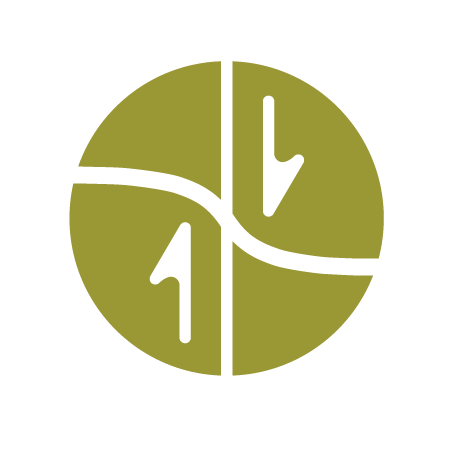Software Tools
by Brad Aagaard — last modified Mar 01, 2012 11:01 AM
Tools for numerical modeling of crustal dynamics and earthquake faulting.
See the workflow diagram for how combinations of these tools are usually used in the context of numerical modeling of crustal dynamics.
Geologic Structure
Gocad
Commercial software for constructing and interpreting models of geologic structure. Primarily used in oil, gas, mining, and environmental work. Good for constructing fault surfaces from geologic data sets. Exports surfaces in ASCII TSurf format. Used to construct the SCEC Community Fault Model and SCEC Community Velocity Model-H (i.e., the Harvard model).
Website: www.earthdecision.com
Availability: commercial
Earth Vision
Commercial software for constructing and interpreting models of geologic structure. Primarily used in oil and gas work. Can export surfaces in ASCII Tsurf format. Used to construct the USGS Northern CA 3-D geologic model.
Website: www.dgi.com
Availability: commercial
Mesh Generation
CUBIT
Sandia National Laboratories developed mesh generation tool for structured and unstructured 2-D and 3-D models. Support for unstructured hex meshing and its GUI and scripting interfaces make this a popular tool. Importing complex geologic models (e.g., Tsurf files) can be difficult. Export to Exodus files allows seamlesss integration with PyLith.
Website: cubit.sandia.gov (US gov’t agencies)
Tutorials: cubit.sandia.gov/public/tutorials.html
Availability: non-commercial; small, one time acquisition fee for US Gov’t agencies
Trelis
Commercial version of CUBIT for non-US gov’t agencies. We are finding small, subtle differences with CUBIT in terms of portability of journal files.
Website: csimsoft.com (Academic and non-US gov’t agencies)
Tutorials: csimsoft.com/tutorials.jsp
Availability: commercial
LaGriT
Los Alamos Grid Toolbox (LaGriT) for generation of unstructured triangular and tetrahedral meshes. User interface is the command line or an input file. Steeper learning curve than CUBIT but has rich features for manipulating the mesh and improving element quality. Seamless import of Tsurf files. Export to GMV/Pset files allows seamless integration with PyLith.
Website: lagrit.lanl.gov
Availability: free; Binaries for Mac, Linux, and Sun; no longer under active development
Gmsh
Open source code for generating structured and unstructured meshes. Graphical user interface for geometry construction and meshing. Similar to CUBIT but geometry tools are more limited.
Website: geuz.org/gmsh/
Availability: open source (C++)
TetGen
Open source code for generating tetrahedral meshes. Volume mesh created from surface meshes.
Website: tetgen.org
Availability: open source (C++)
Physics Code
PyLith
CIG developed open-source code for modeling 2-D and 3-D dynamic and quasi-static crustal deformation. Elements supported include linear triangular, quadrilateral, tetrehedral, and hexahedral cells.
Website: www.geodynamics.org/cig/software/pylith
Availability: Source code with binaries for several platforms.
Relax
Open-source code developed by Sylvain Barbot and supported by CIG for modeling 2-D and 3-D quasi-static crustal deformation. Relax implements a semi-analytic Fourier-domain solver and equivalent body forces to compute quasi-static relaxation of a stress perturbation.
Website: www.geodynamics.org/cig/software/relax
Availability: Source code with binaries for several platforms.
GeoFEST
NASA/JPL developed code for modeling quasi-static crustal deformation. Includes adaptive mesh refinement using Pyramid. Supports tetrahedral cells.
Website: www.openchannelsoftware.org/projects/GeoFEST
Availability: source code ©; development status unknown
Abaqus
Commercial finite-element code. Primarily used in mechanical engineering work.
Website: www.simulia.com
Availability: commercial
Visualization
ParaView
Open-source, VTK-based 3-D visualization software. Easy to use GUI with Python scripting capabilities. Seamless visualization of PyLith output. Some documentation via builtin help, but detailed documentation is sold by Kitware.
Website: www.paraview.org
Tutorials: www.paraview.org/Wiki/The_ParaView_Tutorial
Availability: source code with binaries for several platforms.
Visit
Open-source, VTK-based 3-D visualization software. Easy to use GUI with Python scripting capabilities. Seamless visualization of PyLith output. Extensive documentation.
Website: visit.llnl.gov
Availability: source code with binaries for several platforms.
Matlab
Widely used commercial visualization and data processing software. 3-D visualization is somewhat limited compared with most 3-D visualization tools.
Website: www.mathworks.com
Availability: commercial
Mayavi
Open-source, VTK-based 3-D visualization software. Easy to use GUI with extensive Python scripting capabilities. Moderate learning curve due to limited documentation. Can be difficult to install due to many dependencies.
Website: http://code.enthought.com/projects/mayavi/
Availability: open source

